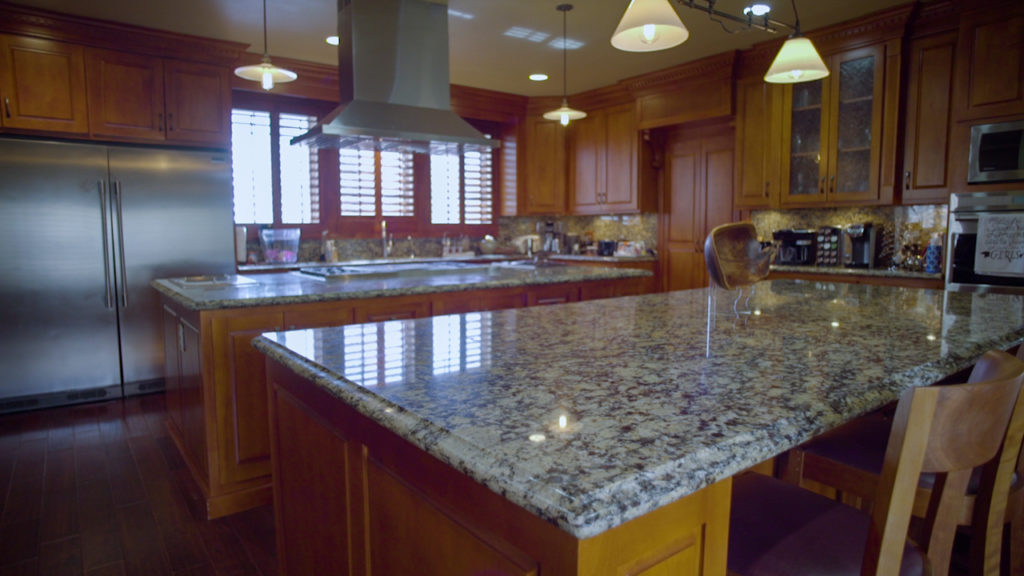The Science Behind Granite

When we think of granite, we mostly think of our beautiful kitchen countertops and tiles. Granite has been used in architecture for centuries and has become a staple of sophistication and class. This stone is obviously one of the most beautiful kinds that exist, which is why we put it all over our homes. However, have you ever wondered how it’s formed and made? If you have, then you are in luck, because we are about to learn all about the science behind how it forms, and how it gets into your home. This is about to get interesting and hopefully, we can all appreciate granite a little more than we already do.
From the Core to the Surface
Granite is a very common type of igneous rock that is underlying in much of the earth’s continental crust. It is made up primarily of quartz, feldspar, micas, amphiboles, and other kinds of additional trace minerals. It is these materials and minerals that give granite its signature and iconic look and colors. It is categorized as an intrusive igneous rock, meaning that it is formed during the cooling of molten rock. In most cases, the slower the rock has been cooled, the larger the mineral crystals in the rock are. This is because the K-Feldspar megacrysts can form in sizes greater than 5 centimeters under special circumstances. In order for granite to form, it needs to be buried below several kilometers of sediment and rock that is necessary to produce enough heat in order to meet all of the rocks and minerals together.
Granite is formally a plutonic rock that is made up of between 10% and 50% quartz (most likely semi-transparent white) and 65% to 90% total feldspar (most likely in a pinkish or white tone).
Granite is formed many meters under the surface of the earth, possibly hundreds. It is formed under thousands of pounds of pressure and heat, that which we cannot reach without burning ourselves alive. The granite that we are able to encounter and access for all of our lovely countertops has been brought to the surface. At some point in time, this granite was uplifted and the overlying sediment was shed due to erosion. The change from high pressure to low pressure over time can cause the granite to crack and expand. Along with this and changes in temperature, some granite can be weakened and not usable for building and other practical uses.
From the Ground to Your Kitchen
As you may or may not have guessed, granite is typically mined and extracted from the ground. We mine as deep as we can to get the best quality granite.
Granite has been used as far back as the 26th century BC. The Red Pyramid of Egypt, the third largest of the Egyptian pyramids was made up of limestone and granite blocks that each weighed several tons. The Great Pyramid of Giza that dates back to 2580 BC contains a sarcophagus made up of “Red Aswan Granite.” The fact that these pyramids are still standing, shows the resilience and strength of granite.
The first temple that was made up entirely of granite was built in Tanjore, India around 11th century AD and another temple dedicated to Lord Shiva was built in 1010. The tallest temple in South India is said to be built of more than 81 tonnes of granite.
Imperial Roman granite was taken there from Egypt and Turkey on the islands of Elba and Giglio. Granite was an integral part of Roman architecture. Granite used to be carved with dull tools that yielded less precise results than modern-day cutting tools. Through Roman architecture, we’ve been able to discover the granite actually gets harder over time.
Modern-day granite is cut more precisely and smoothed out to create a shiny and smooth outer surface. It has been frequently used in statues, memorials, and gravestones. Granite memorials became a symbol of status and wealth in Victorian England. It takes lots of skill to properly and precisely carve granite since it is such a hard material. It is obviously used in modern-day homes, mostly in kitchens and bathrooms.
We hope that you liked learning about the science of granite as much as we did. If you have any interest in installing granite countertops in your kitchen or bathroom, don’t hesitate to contact us. We are always ready to take your call.




